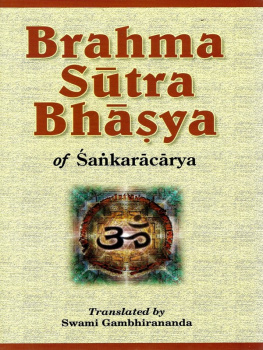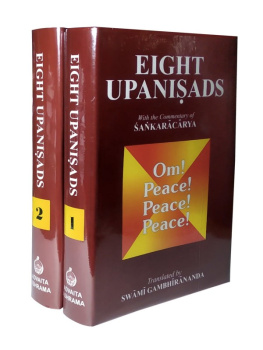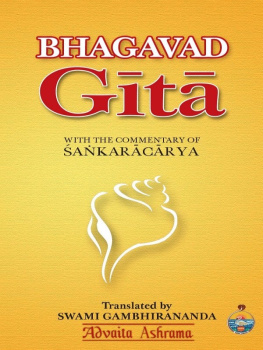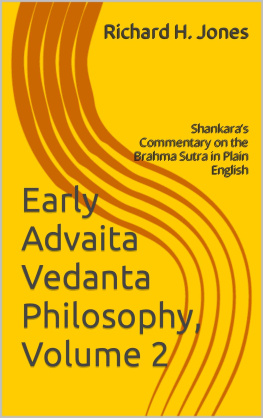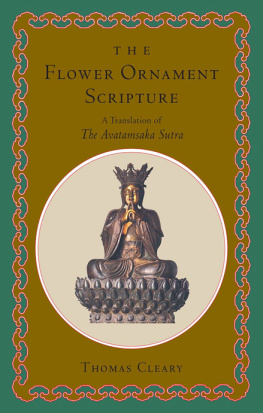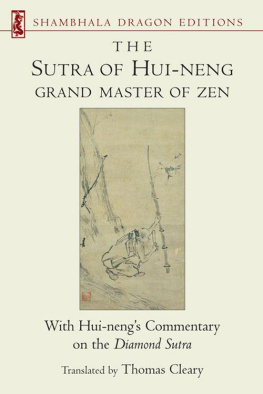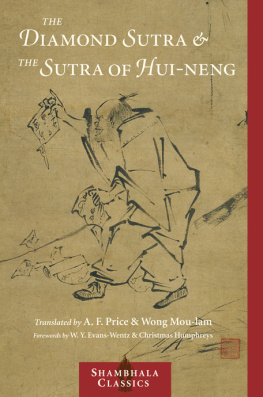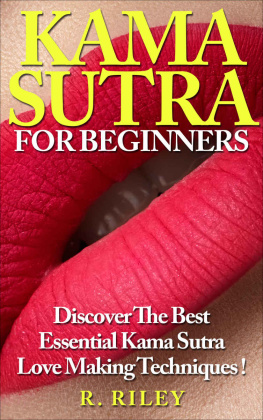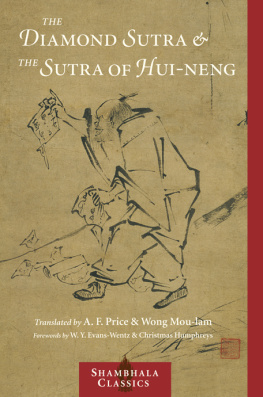PREFACE TO THE FIRST EDITION
Sri Sarlkaracarya's great commentary on the Brahma-Sutras had been translated into English twice. But the non-availability of these translations or their high price raised the need for a fresh dependable translation at a moderate price. The present publication admirably meets this demand.
The translator, Swami Gambhirananda, has to his credit a number of publications of the Ramakrishna Order. His latest work, a translation of Sadkara's commentary on eight principal Upani$ads, published by us five years back, was well received and has been in constant demand ever since. He completed the translation of the Sutra-Bharya three years ago, but owing to various difficulties we had to postpone its publication.
The present publication has its own special features. The translator has given the word-for-word meaning of each aphorism under its Sanskrit text, followed by a running translation, with additional words in brackets for clarification. In the translation of the commentary, the texts setting forth doubts, the opponent's views, objections on the latter, and the Vedantin's answers have been shown separately, to facilitate easy comprehension. The translation is generally based on the Ratnaprabad, though the Nyaya-nirnaya and the Bhamati have been consulted occasionally. Sanskrit words have been printed with diacritical marks. In quoting from the Upani$ads, the translator has used Swami Madhavananda's translation of the Brhadaranyaka Upmi,wad and his own translation of the Eight Upanisads referred to above. The other texts are translated afresh. He has also added notes to elucidate difficult passages. The contents have been divided topic-wise, and an index of sutras in Sanskrit has been added
We have made every effort to make the publication an attracts tive one, and hope that it would be welcome to all lovers of Vedanta philosophy. A part of its sale proceeds will be spent for the public library run by us in Calcutta.
Swami Vivekananda's Birthday, January 23, 1965
PUBLISHER
PREFACE TO THE SECOND EDITION
This work is being reprinted after seven years. Our thanks go to the eminent Vedantin Dr. T. M. P. Mahadevan, Director, Centre of Advanced Study in Philosophy, University of Madras for writing a valuable foreword.
January 26, 1972
PUBLISHER

The three basic texts of Vedanta are the Upani$ads, the Bhagavad-gita, and the Brahma-sutra. Together they are referred to as the prasthana-traya, triple canon of Vedanta. The Upani$ads constitute the revealed texts (Sruti-prasthana); they mark the summits of the Veda which is Sruti (the heard, the revealed). They are the pristine springs of Vedintic metaphysics; Vedanta is the name given to them because they are the end (aim as well as concluding parts) of the Veda (Veda + anta). The Bhagavad-gita comes next only to the Upani$ads. It is given a status which is almost equal to that of the Upani$ads. As embodying the teachings of Sri KMa, and as constituting the cream of the Epic Mahabharata, the Bhagavad-gita occupies a unique place in the Vedantic tradition. A popular verse compares the Upani$ads to the cows, the Bhagavad-g-lta to the milk, Sri Yuma to the milkman, Arjuna, the Paudava hero, to the calf, and the wise people to the partakers of the milk. Sri Saiikara describes the Bhagavad-gita as the quintessence of the teaching of the entire Veda (samasta-vedartha-sarasangraba-bhutam). As this text forms a part of the Mahubharata which is a Smrti (the remembered, i.e. a secondary text based on the Veda), it is called Smrti-prasthana. The third of the canonical texts is the Brahmasutra which is regarded as Nyaya-prasthana, because it sets forth the teachings of Vedanta in a logical order. This work is known by other names also: Vedanta-sutra, since it is the aphoristic text on Vedanta; Sdriraka-sutra, since it is concerned with the nature and destiny of the embodied soul; Bhik,ru-sutra, since those who are most competent to study it are the sannyasins; Uttaramirnamsa-sutra, since it is an inquiry into the final sections of the Veda.
The author of the Brahma-sutra is Badarayama whom Indian tradition identifies with Vyasa, the arranger or compiler of the Veda. A verse in the Bhdmati which is Vacaspati Migra's commentary on Sri Sarikara's commentary on the Brahma-sutra, describes Vyasa as the incarnation of Vi$pu's cognitive energy (Jftdnaakti-avatara). In the Brahma-sutra, Badarayaoa-Vyasa strings together the leading concepts of Vedanta in an ordered manner. The Sutra is an exquisite garland made out of Upani$adblossoms. It is divided into four chapters (adhyayas); each chapter consists of four parts (padas); each part has a number of sections. (adhikaranas); and each section has one or more aphorisms (sutras). According to Sarkara, the number of sections is 192. The total number of aphorisms is 555.
In the first chapter which is on `harmony' (Samanvaya), Badarayaraa teaches that the Vedantic texts, taken as a whole, have for their purport Brahman, the non-dual Reality. Those passages of the Upanisads where express mention is made of Brahman or Atman do not present any difficulty. But there are other passages in which other terms are used-terms which do not normaly mean Brahman-Atman. In such cases, the meaning should be construed from the context For instance, aka.a means `ether'. But in a text where it is stated that all things come out of dkafa and get resolved into it, the expression akafa obviously means Brahman, which is the ground of the universe (B.S. I. i. 22). Similarly, in the Chandogya text, "Which is that deity? He said: Prana" (I. xi. 4-5), the term prang means not the vital air, but Brahman, because all beings are said to merge in It (B.S. I. i. 23). The same is true in regard to other terms such as mans or manomaya. In the Chandogya text where this term occurs, there is the commencing statement "All this, indeed, is Brahman" (III. xiv. 1-2), and also the manomaya is taught as the object of meditation. This can only be Brahman, and not the individual mind or soul (B.S. I. ii. 1). In all such cases, what determines the meaning of a term is not the ordinary usage, but the context, (Prakaranac-ca:B.S.I.ii.10), and the construed meaning of the related texts (Vakyanvayat:B.S.I.iv.19). Thus Badarayai a shows that the Vedantic texts harmoniously teach Brahman as the plenary reality, the world-ground which is of the nature of existence-consciousness-bliss, which is the supreme object of meditation, and which is the final end to be realized.
In the second chapter which is entitled `non-conflict' (Avirodha), Badarayaua discusses the objections that may be raised against the metaphysics of Vedanta. The principal objector is the follower of the Samkhya system. Great attention is paid to the Samkhya because it comes very close to Vedanta. If the Samkhya view is shown to be untenable, it follows that the other views which are more remote are unacceptable. For instance, it is declared (B.S. II. i. 3) that the view of the Yoga of Patafijali stands refuted when it has been shown that the Samkhya view is unsound. Taking its stand on logic, the Samkhya argues that Pradhana or Prakxti is the cause of evolution. Employing the same logic, the Vedantin shows that Pradhina cannot account for the world-evolution. There is observed design in the world. This would be inexplicable if Pradhana were to be the cause. How can the inert Pradhana have a sense of design, or even the will to create? Also, why and how it begins to evolve, and why and how it ceases from evolving, it is not possible to say; for, since Pradhana is not-intelligent, there should be either perpetual evolution or dissolution. And, any intelligent purpose is out of place; there would be only a blind process or movement without an end (B.S. II. ii. 1-6). The Vaii;e$ika system traces the world to primary atoms, posits adrga as the unseen power responsible for bringing the atoms together or for separating them. This view fares even worse than the Samkhya theory. Whether as located in the atoms or in the souls, the unseen potency cannot move the atoms because it is unintelligent even as the atoms are. There are other attendant defects in the system which cannot be remedied. The most serious of these difficulties is that the Vaie$ika believes that from the partless atoms, the things of the world with parts arise (B.S. II. ii. 11-17). There are realistic as well as idealistic schools in Buddhism. All things are aggregates, according to Buddhism: there is nothing like substantiality. For the realistic schools, there are two kinds of aggregates, the internal and the external. But, consistent with the other Buddhist doctrine of momentariness, how aggregation can take place at all passes one's understanding. There is a processor of successive moments: but how are the moments related? What connection is there between what precedes and what succeeds? These questions remain unsolved (B.S. IT. ii. 18 ff). For the Buddhist idealist, there is no extra-mental reality; ideas are things; what is real is a series of momentary ideas. This view also is untenable. The appearance of ideas is sought to be explained as brought about by residual impression. But, how can there be residual impression if there are no external things. So, says Badarayaia, the Buddhist view is totally unintelligible (Saruathd-anupapattih:B.S.II.ii.32). The Jaina philosophy seeks to combine opposites such as permanence and change, identity and difference. The obvious criticism of such a view would be: how could one and the same thing possess contradictory attributes? There are other doctrines, too, of Jainism which are unacceptable, e.g. that the soul has variable size. And so, the Jaina position has to be rejected (B.S. II. ii. 33 ff).
Next page
